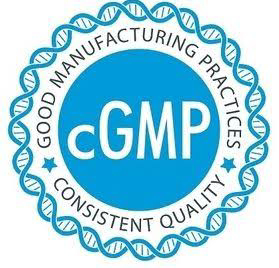Quality risk management (QRM) is a systematic process for the assess, control, review and communication of risks to quality of drug product across the product life cycle.
QRM process is implemented includes the following major steps:
1. Risk assessment (Identification/analysis/evaluation)
2. Risk control (Reduction/acceptance)
3. Risk review
Quality risk management tools:
QRM tools are used to take science based decision which should be used either alone or in combination.Based on situation, right tool or tools should be used. Selection of tool should be commensurate with the level of risk.
Following are examples of tools successfully used in QRM.
A. FMEA (Failure mode and effects analysis)
B. Root cause analysis
C. Cause and effect
D. Preliminary hazard analysis
E. Process mapping
F. Flow charting
G. Brainstorming
H. HACCP (Hazard analysis and critical control points)
I. FTA (Fault tree analysis)
J. Decision analysis
K. Stastical tools
Mainly six parameter assess before introducing new products on site as per following.
1. QRM within Change Control
Identifies if there is any:➡️ There is any impact on existing risk assessments.
➡️ New Risk assessments required.
2. Product Quality Risk Assessment:
➡️ QbD process➡️ Product Quality Attribute Assessment = An input.
➡️ PQAs and Severity for process steps.
➡️ Initial PQRA is performed prior to the first GMP pivotal manufacturing campaign.
➡️ Reviewed for example when transferring the manufacturing process to a new site.
3. Cross Contamination Risk Assessment:
Appropriate Facility, Equipment & Environmental Controls minimise the risk of contamination. Risk tools are used to.➡️ Determine controls required to avoid cross contamination in a multi-product facility.
➡️ Select the appropriate EM locations.
➡️ Determine the appropriate frequency for facility cleaning, sanitisation, EM and PM monitoring based on a documented evaluation of the risk of contamination.
4. Process Risk Assessment:
➡️ Risks related to the manufacturing process and sustained risks from QRAES.➡️ Failure Mode and Effects Analysis (FMEA) methodology i.e. risk assessments using Severity, Likelihood and Detection scoring is used at ADL for Process risk assessments e.g. filling, inspection, interventions etc…
➡️ In these cases, a lot of detailed information is available including information on detection controls.
5. Quality Risk Assessment for Equipment and Automated Systems (QRAES):
➡️ Risk based approach to equipment qualification.➡️ Determines the controls to be put in place prior to equipment validation to manage the risk.
➡️ Risks that need sustained procedural control should be adopted into the process FMEA.
6. Raw Material Risk Assessment:
➡️ Risk Assessments are performed for all active GMP materials and devices.➡️ Used to ascertain the appropriate controls to be applied to its manufacture.
➡️ Related to the physical attributes of the raw material (safety, complexity, animal derived material, melamine, residual solvents, heavy metal/elemental impurities, leachables, handling extraneous matter etc.) as it relates to the safety of the patient using the drug product the raw material is used.
➡️ Raw materials are subjected to continual evaluation throughout the product lifecycle.
After performing risk assessment, appropriate risk mitigation and control initiate to overcome critical risk.
Periodically review the risk assessment and update accordingly.
About the Author:
Dhansukh Viradiya is a highly accomplished expert in the pharmaceutical and biopharmaceutical industries. With over 10 years of experience in the field, he has gained comprehensive knowledge and expertise in various areas, including Process Validation, Cleaning Validation, Quality Management System, In-process quality assurance, Qualification etc.
Mr. Dhansukh holds a Master's degree in Pharmacy from a renowned University, where he specialized in Quality Assurance.
As a thought leader, Mr. Dhansukh has published numerous articles and white papers on various topics related to pharmaceutical and biopharmaceutical industries. His research work focuses on emerging trends, current regulatory expectations, advancements in technology, personalized medicine, and the intersection of healthcare and technology.
With his passion for improving patient care and dedication to advancing the field, Dhansukh Viradiya continues to make significant contributions to the pharmaceutical and biopharmaceutical industries. His insights and expertise make him a valuable resource in understanding the dynamic landscape of these sectors and their impact on global healthcare.
Disclaimer: The author's biography is provided for informational purposes only and does not imply any endorsement or affiliation with the article or its content.














No comments:
Post a Comment